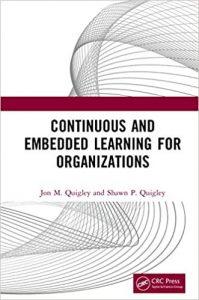Laminar and Turbulent Flow in Project Management
Laminar and Turbulent Flow in Project Management:
Navigating Organizational Tension
We might believe our projects and the organization should always operate smoothly whether projects or operations, understanding organizational tension – and how to use to our advantage, is crucial for success. One effective way to conceptualize this tension is through the analogy of laminar and turbulent flow. Just as fluids can flow smoothly or chaotically, so can projects and organizations. Knowing when to use each flow type can significantly impact your project’s outcome. There are analogs to project and management approaches.
What Are Laminar and Turbulent Flow?
Laminar flow refers to a smooth, orderly movement of fluid where layers glide past one another without disruption. In contrast, turbulent flow is characterized by chaotic changes in pressure and velocity, leading to eddies and vortices. Both flows are helpful but not ubiquitously useful; as with most things, both should be in our engineering (project and business) repertoire.
Laminar Flow in Project Management
Applying laminar flow to project management (or organization) symbolizes a structured and controlled approach. Processes are well-defined, roles are clear, and tasks progress methodically. We prefer no conflicts that slow the performance. For laminar flow, we value smooth operations; in the event of a difference of perspective, we may tend to suppress dissent or differing views. When we value harmony above all others, we may encourage group think. This may seem like it is helpful, but essentially, we are discouraging a variety of perspectives, which are often the way to address the difficulty presented.
When to Use Laminar Flow
- Predictable Environments: Ideal for projects with well-understood objectives and minimal changes.
- Regulatory Compliance: Necessary when strict adherence to protocols is required.
- Efficiency Optimization: When the goal is to maximize efficiency and minimize waste.
Turbulent Flow in Organizational Tension
Turbulent flow represents a dynamic and adaptive project management style. It embraces flexibility and rapid response to change. If you have been in or managed many projects, you will recognize these are not operations, though sometimes our plans may seem the effort is more akin to operations. Another way to look at things is interpersonal, which is the exact opposite of the laminar flow. Our team members are encouraged to have disparate perspectives and voice these. It is up to the leader, management, or project manager to use this tension and turbulence to find the best solution.
When to Embrace Turbulent Flow
- Innovation Projects: Suited for initiatives requiring creativity and experimentation.
- Uncertain Conditions: Beneficial in volatile markets where adaptability is key.
- Complex Problem-Solving: When solutions are not clear-cut and require iterative approaches.
Balancing Laminar and Turbulent Flow
Understanding when to switch between these two strategies for effective project management is essential. Too much rigidity can stifle innovation, while excessive chaos can hinder progress.
Strategies for Effective Balance
- Flexible Frameworks: Implement structures that allow adaptability without losing control.
- Empowered Teams: Encourage autonomy so team members can adjust flow types as needed.
- Continuous Feedback: Regular check-ins to assess and adjust the project’s direction.
Conclusion
By leveraging the concepts of laminar and turbulent flow, project managers can better navigate organizational tension. Recognizing when to apply each flow type ensures optimal performance and project success. This is not just for project managers, but any leader in the organization. The tension and disputes in the organization are how we overcome constraints and limitations. Well handled, it is to our advantage, poorly handled, we end up with a harmonious failing team, or a team that spends more time arguing over the same items.
For more information, contact us
Follow us on social media at:
Amazon Author Central https://www.amazon.com/-/e/B002A56N5E
LinkedIn: https://www.linkedin.com/in/jonmquigley/

